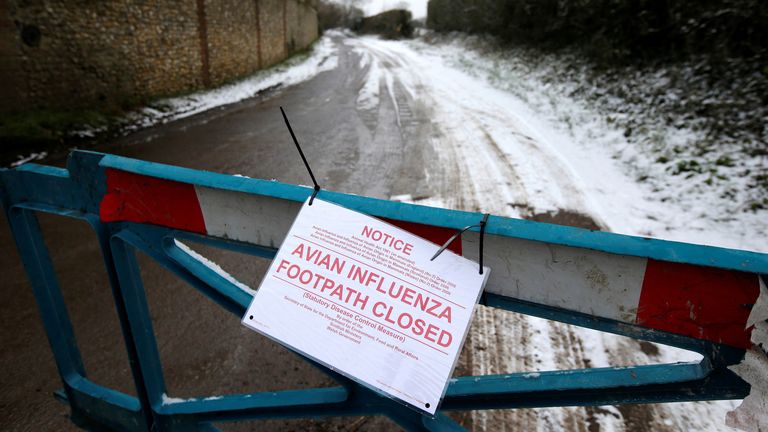[ad_1]
Britain’s poultry farmers are counting the days until Christmas.
Every day now, two or three new premises have been testing positive for bird flu. If they do, their flocks are culled.
If that happens to farmers of seasonal favourites like turkeys and geese, there’s no hope of recovery till this time next year.
Since last winter, bird flu has been a constant threat. The H5N1 strain of highly pathogenic avian influenza (HPAI) has caused sporadic outbreaks on poultry farms and in wild birds since the mid-2000s.
However, this year in Europe and North America, the virus has been persisting year-round in wild birds, becoming effectively endemic.
This fact fundamentally changes the way we need to control the disease, say experts.
“We need to be able to work together globally to develop constructive solutions,” says Ian Brown, at England’s Animal and Plant Health Agency (APHA). Dr Brown is leading a new consortium of UK institutions to find solutions to the bird flu crisis.
“We’re in an uncertain landscape and we could be faced with re-incursion of this or other strains on a more frequent basis. And that’s something we need to plan for,” says Dr Brown.
Click to subscribe to the Sky News Daily wherever you get your podcasts
At the APHA lab in Weybridge, Surrey, they test every sample of suspected bird flu coming from poultry farms and wild birds. They’ve seen a 600% increase in cases in the last three months.
The first step to getting the outbreak under control is improving biosecurity on poultry farms to limit spread of the virus among flocks in close contact with each other.
50 million birds culled in Europe this year
But HPAI is incredibly infectious. By one estimate, a single dropping from an infected bird can contain 100,000 “infectious doses” of the virus. The tiniest contamination could enter a poultry shed on feed, a boot or vehicle tyre.
In the medium term, the industry is looking to the vaccination of birds. But it’s complicated. Right now, there aren’t adequate supplies of vaccine. And there’s little real-world experience of using them.
What’s more, “vaccinating comes at a cost,” says Brown. “You actually then have to do quite intensive surveillance in your population as you vaccinate.” Birds that are vaccinated will have antibodies for HPAI, distinguishing them from infected birds is problematic.
With 50 million birds culled in Europe already this year, and a similar number in North America, other bird flu experts think the only long-term solution is to fundamentally re-think the way we farm poultry.
“I don’t think that it’s tenable to continue culling millions of birds every year just for economic reasons,” says Prof Thjis Kuiken, a veterinary pathologist at Erasmus Medical Centre in Rotterdam, Netherlands. “I think it’s ethically not acceptable to do so.”
Read more:
A lockdown for anything with feathers – why bird flu epidemic is different this time
Although wild birds now represent the reservoir for new infections of HPAI, its origins and its evolution occurred in farmed poultry, he says.
The virus circulating now first emerged in farmed geese in China in 1996. Exposure to densely crowded poultry flocks has given the virus the opportunity to gain infectiousness, which now explains its ability to spread more effectively in the wild, he argues.
“We’ve let bird flu slip through our fingers,” says Prof Kuiken. “Why are we doing things in such a stupid way? If you look at the impacts of the poultry industry and the other livestock industry on the environment, on human health, on animal health, what are the benefits of that?”
More thought needs to be given about the maximum size of poultry farms, he says and locating them further from each other and ensuring they’re not too close to areas where wildlife like seabirds, ducks and geese congregate.
Conservationists are acutely aware of the risk now posed to wildlife. At the Royal Society for the Protection of Birds’s Minsmere reserve in Suffolk, hundreds of terns died over the summer from bird flu. Now they are seeing barnacle geese, winter visitors from Northern Europe and the Arctic, arrive sick and dying with the virus.
They’re also aware of the potential impact on farmers.
“We have lots of neighbours who are in the poultry business, whether that’s big companies or small farmers with a few turkeys and geese. And they’re all incredibly worried,” says Nick Forster, Senior Site Manager at Minsmere.
“Certainly the answer is not to blame the wild birds,” he says. “We know this disease came out of intensive poultry production, and it would be just crazy to say, yeah, that it’s the wild birds’ fault.”
[ad_2]



